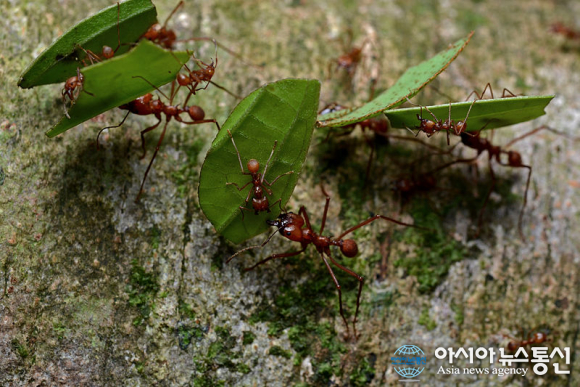 |
| photo by: Geoff Gallice / Wikimedia Commons |
For example, the Texas leafcutting ant (Atta texana), is a major pest of pine plantations in Texas and Louisiana and can cause damage to roads, structures, and crops due to the collapse of its extensive underground colonies.Furthermore, the defoliation the ant causes and the extensive nest excavations it performs can influence soil structure, vegetation cover, and water fluxes.
Researchers from Louisiana State University Agricultural Center have published a new, freely available profile reviewing current information on the Texas leafcutting ant in the open-access Journal of Integrated Pest Management.
This ant is the northernmost species of leafcutting ant, and it’s a threat to continue moving northward in the United States.The ant feeds itself by cultivating and eating fungi that grow on the foliage the ant cuts and brings back to the nest, and the fungi the Texas leafcutting ant cultivates are more cold-tolerant than the fungi more tropical species use.With global temperatures warming, the potential range of the ant therefore increases.
However, the ant isn’t all bad news.While its ecology can cause problems for crops and structures, the ant can be beneficial in natural landscapes.For example, its excavation activities can lead to greater nutrient availability for plants and deeper water infiltration of soil, and some studies have observed greater plant diversity in areas where the ant is present.
Because of the benefits of the ant, control efforts should be taken only when warranted.Common control measures include planting vegetation that isn’t palatable to the ant and using chemical repellents, baits, or insecticides that can be injected into nests.

